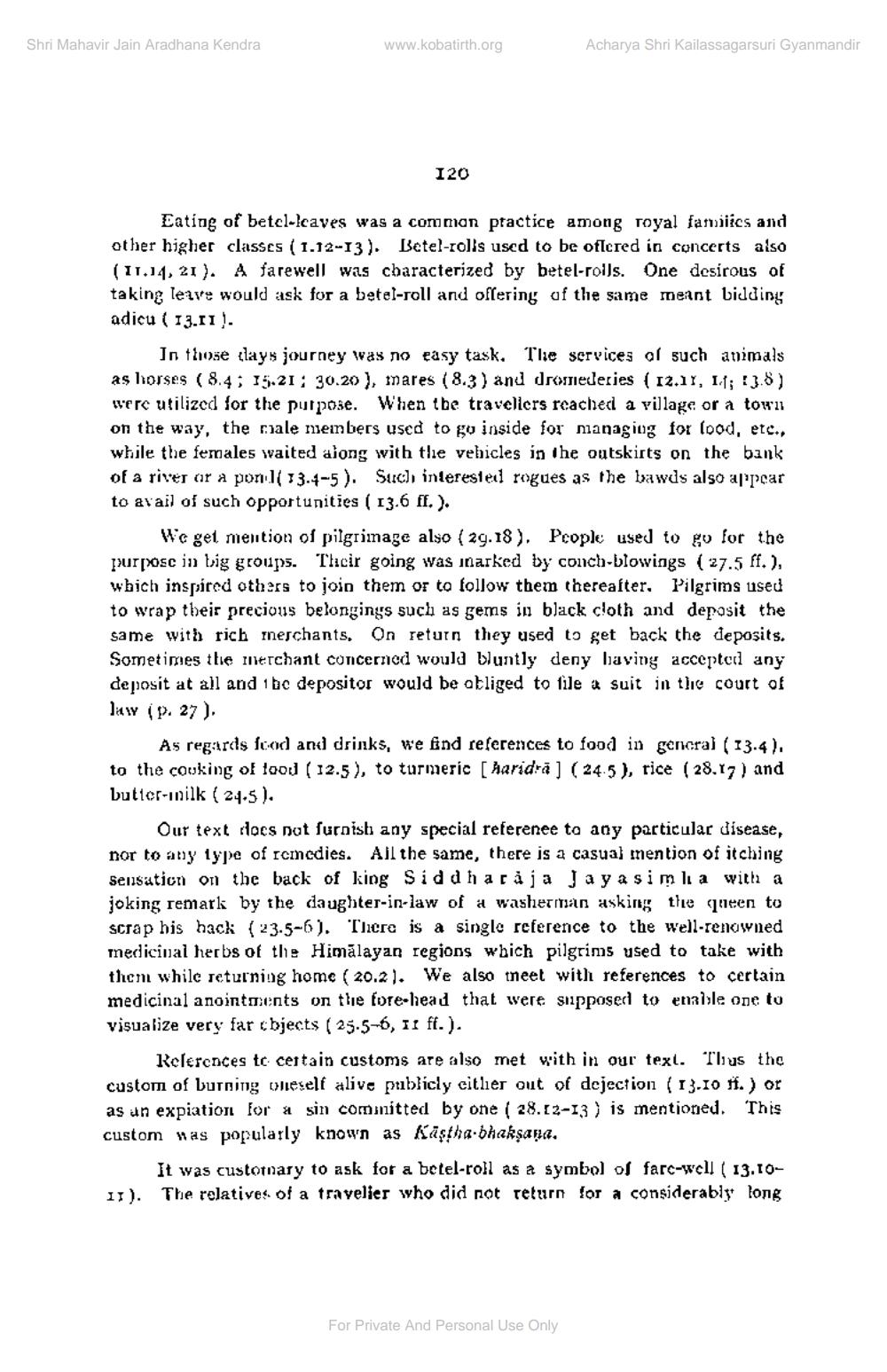________________
Shri Mahavir Jain Aradhana Kendra
www.kobatirth.org
120
Acharya Shri Kailassagarsuri Gyanmandir
Eating of betcl-leaves was a common practice among royal families and other higher classes (1.12-13). Betel-rolls used to be offered in concerts also (11.14, 21). A farewell was characterized by betel-rolls. One desirous of taking leave would ask for a betel-roll and offering of the same meant bidding adicu (13.11).
In those days journey was no easy task. The services of such animals as horses (8.4 15.21; 30.20), mares (8.3) and dromederies (12.11, 1; 13.8) were utilized for the purpose. When the travellers reached a village or a town on the way, the male members used to go inside for managing for lood, etc., while the females waited along with the vehicles in the outskirts on the bank of a river or a pon 1(13.4-5). Such interested rogues as the bawds also appear to avail of such opportunities ( 13.6 ff.).
We get mention of pilgrimage also (29.18). People used to go for the purpose in big groups. Their going was marked by conch-blowings (27.5 ff.), which inspired others to join them or to follow them thereafter. Pilgrims used to wrap their precious belongings such as gems in black cloth and deposit the same with rich merchants. On return they used to get back the deposits. Sometimes the merchant concerned would bluntly deny having accepted any deposit at all and the depositor would be obliged to file a suit in the court of law (p. 27).
As regards food and drinks, we find references to food in general (13.4), to the cooking of food (12.5), to turmeric [haridrā] (24.5), rice (28.17) and butter-milk (24.5).
Our text does not furnish any special referenee to any particular disease, nor to any type of remedies. All the same, there is a casual mention of itching sensation on the back of king Siddharaja Jayasimha with a joking remark by the daughter-in-law of a washerman asking the queen to scrap his hack (23.5-6). There is a single reference to the well-renowned medicinal herbs of the Himalayan regions which pilgrims used to take with them while returning home (20.2). We also meet with references to certain medicinal anointments on the fore-head that were supposed to enable one to visualize very far cbjects (25.5-6, 11 ff.).
References to certain customs are also met with in our text. Thus the custom of burning oneself alive publicly either out of dejection (13.10 f.) or as an expiation for a sin committed by one ( 28.12-13) is mentioned. This custom was popularly known as Kastha-bhakṣaṇa.
It was customary to ask for a betel-roll as a symbol of fare-well (13.1011). The relatives of a travelier who did not return for a considerably long
For Private And Personal Use Only




